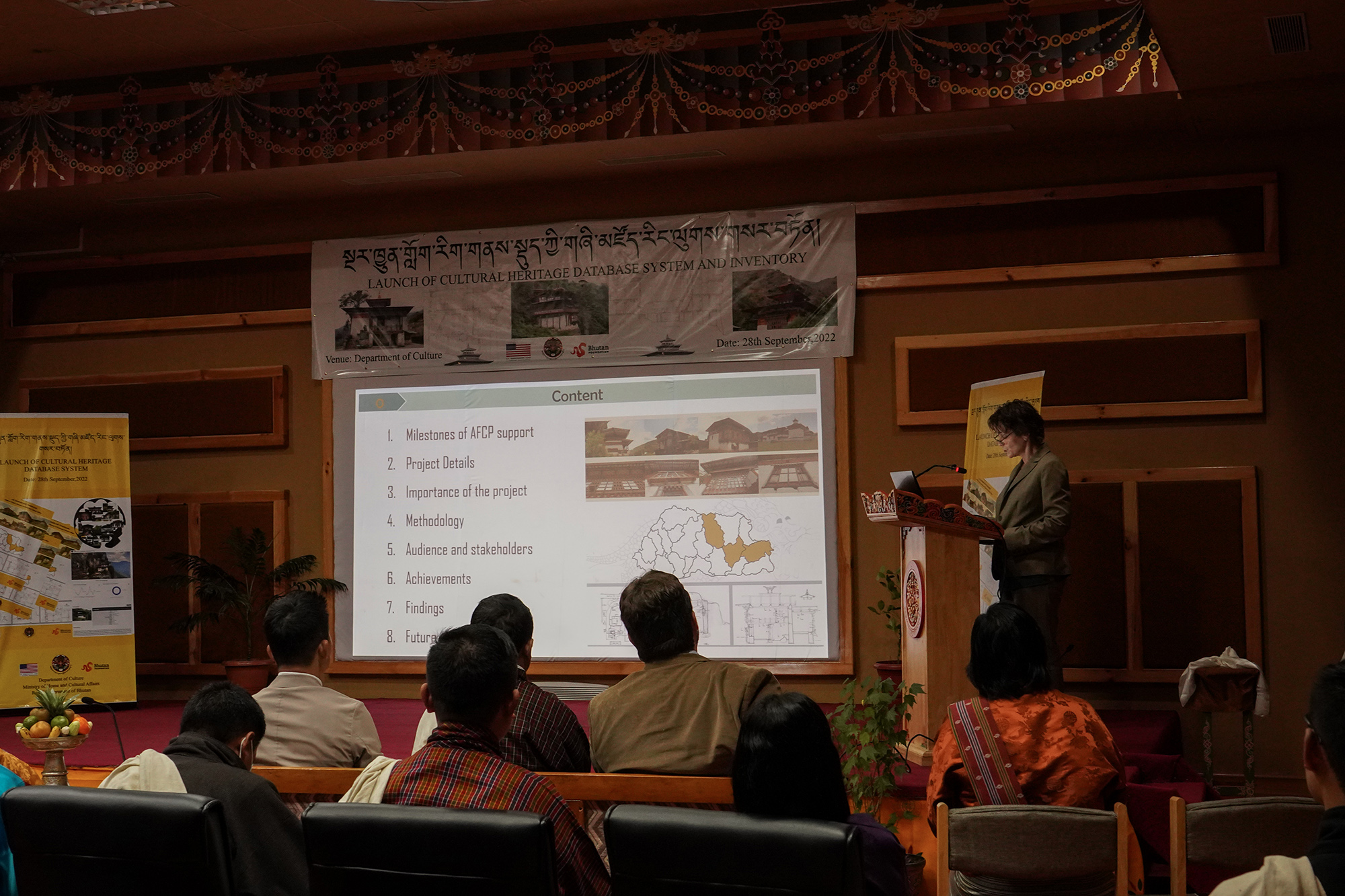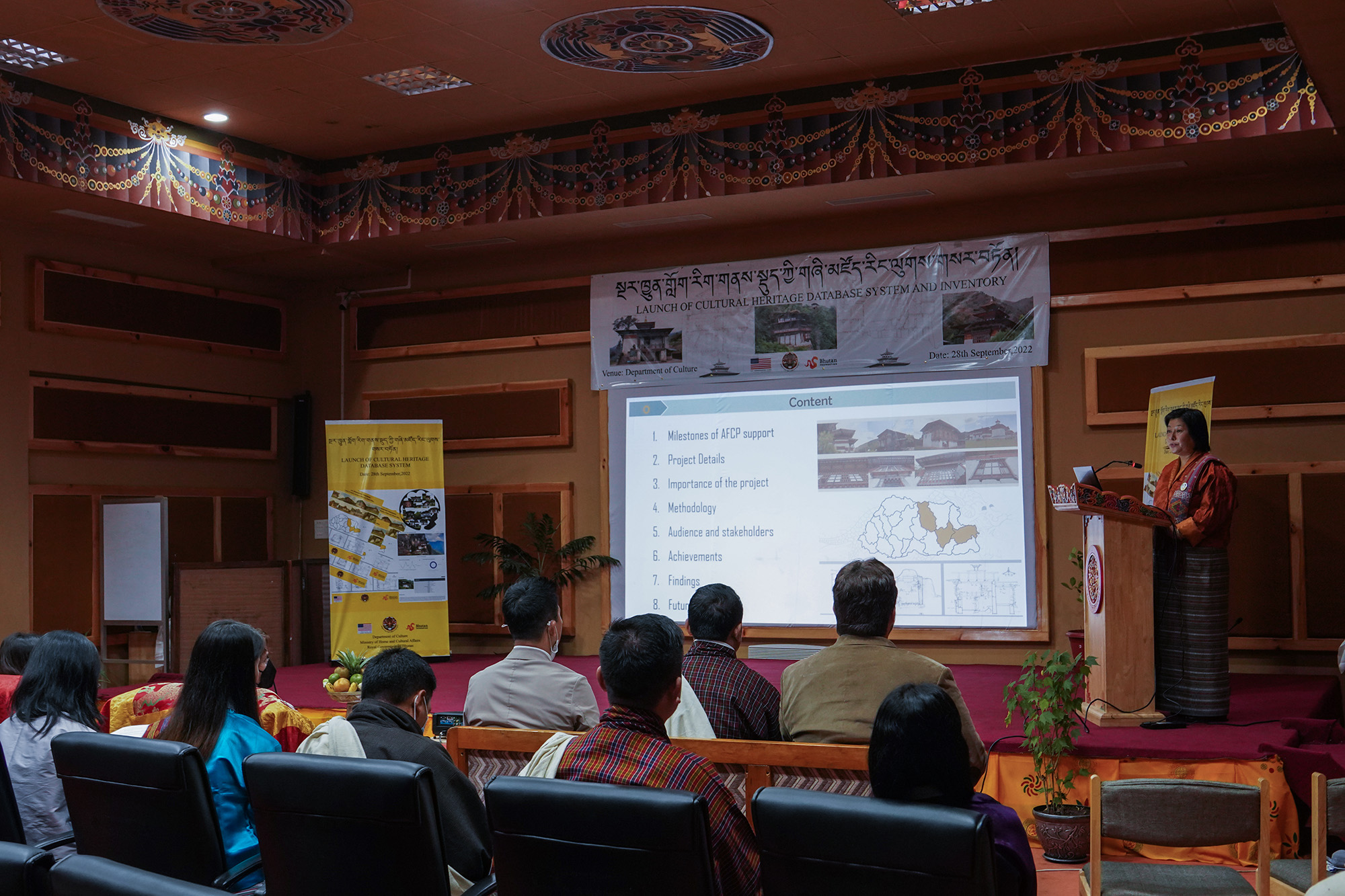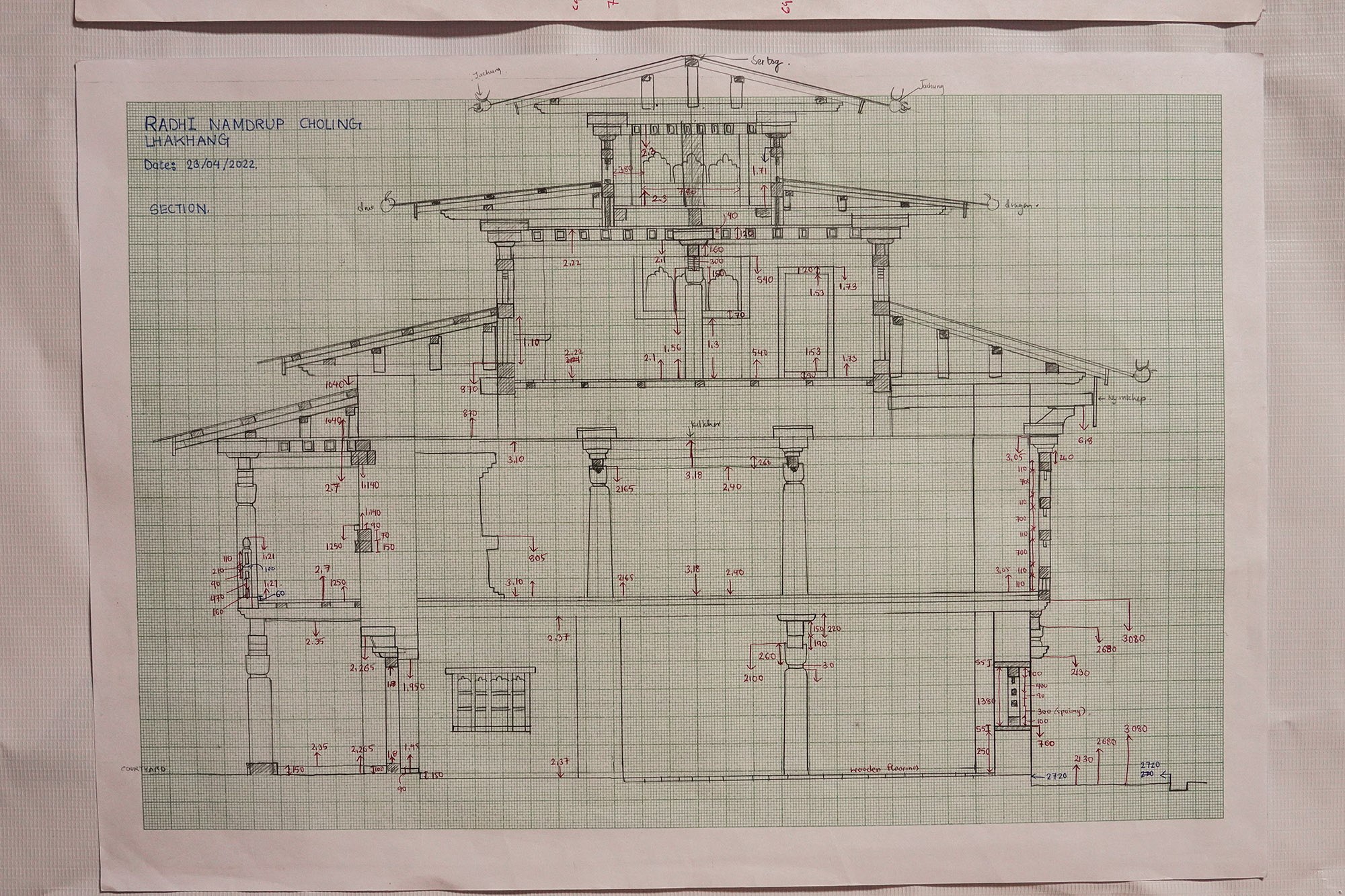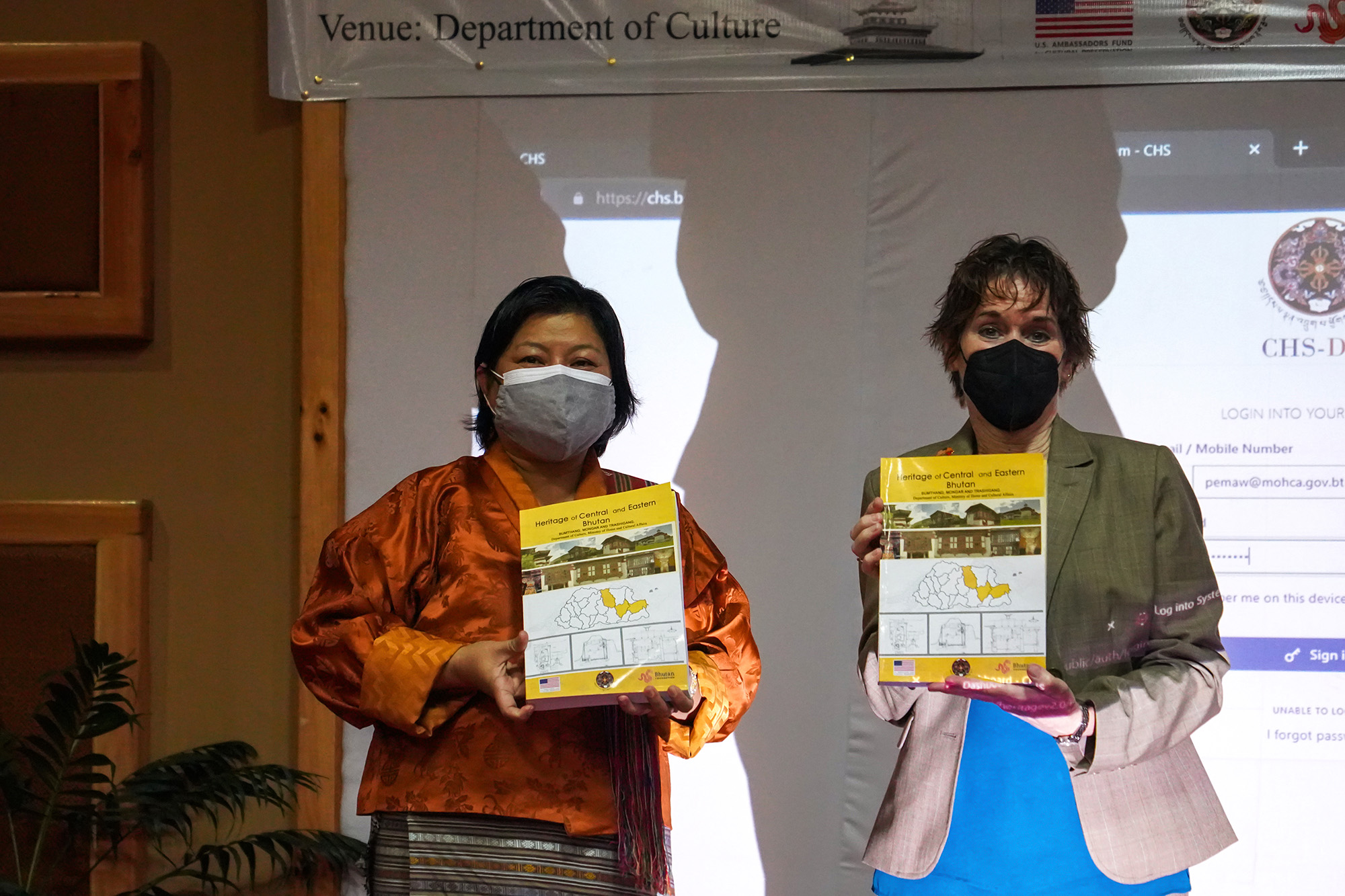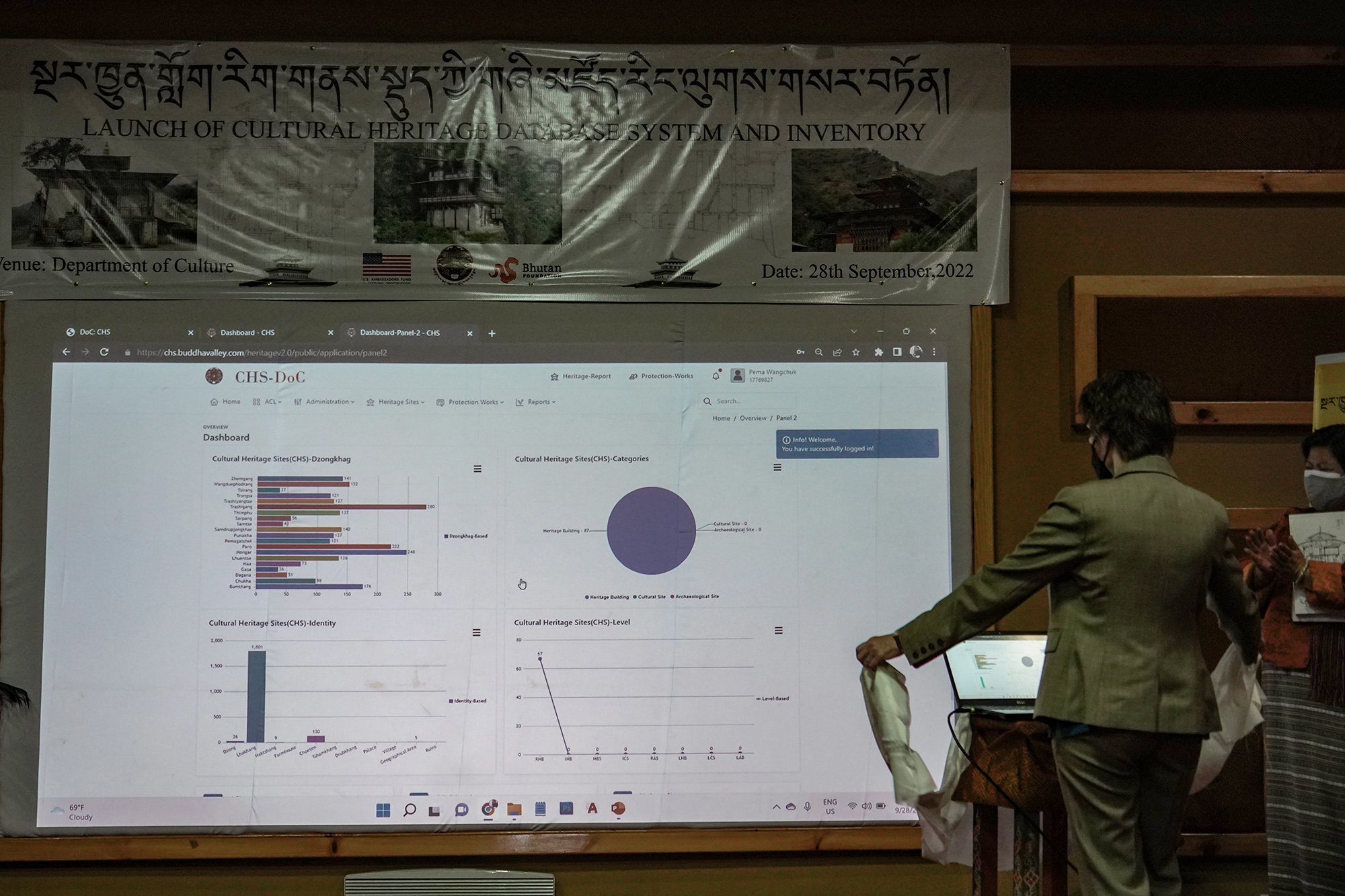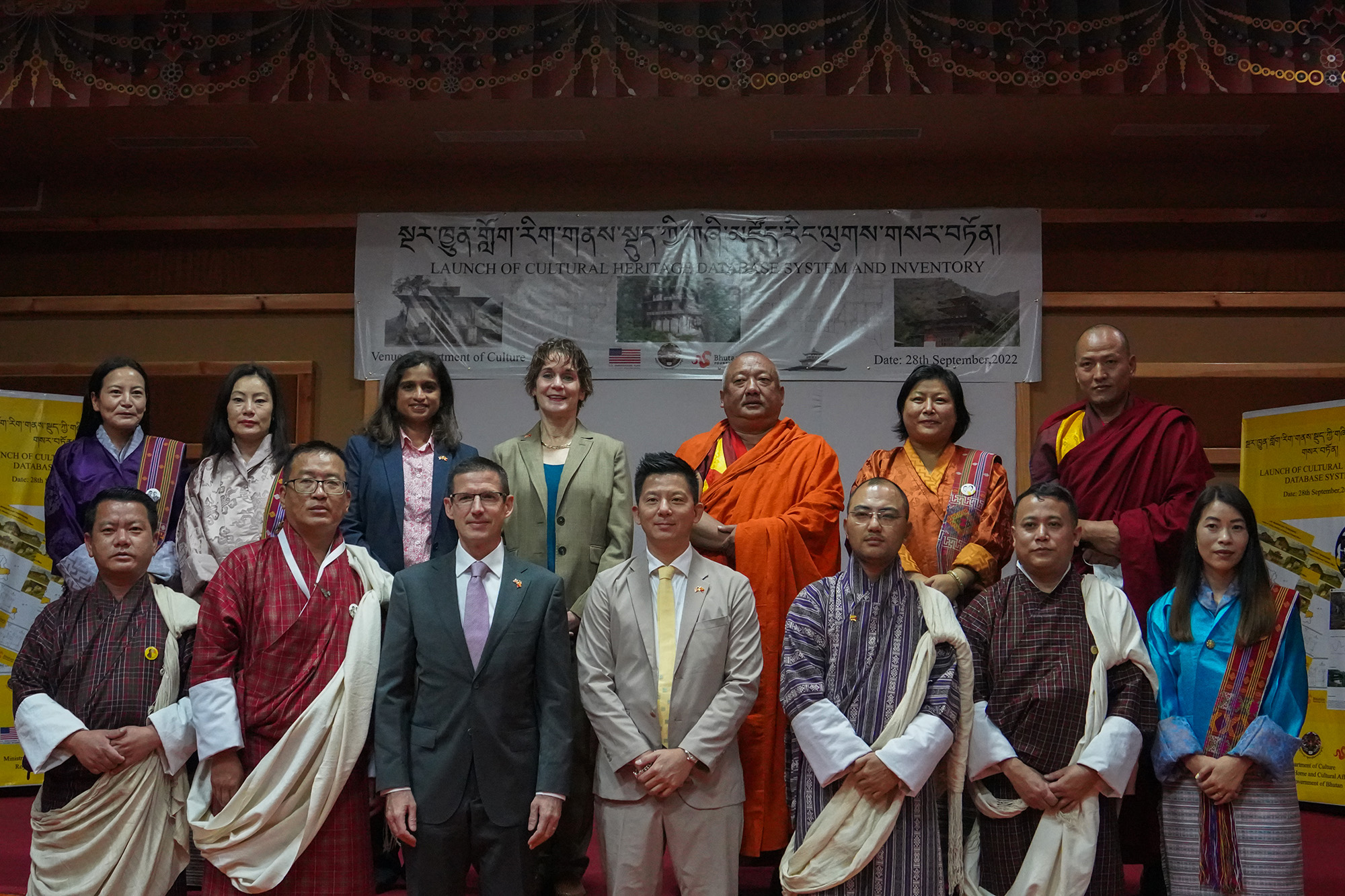September 29, 2022
In the presence of Ms. Patricia A. Lacina, Chargé d’Affaires and delegates from the U.S. Embassy New Delhi, dignitaries and representatives from various departments and agencies, a new inventory database system and publication of surveyed heritage sites were launched on the 28th of September, 2022. The e-book in PDF format will be available for download from the Department of Culture’s website soon.
The cultural heritage database system is fundamental to Bhutan’s efforts to preserve and protect its cultural heritage. With rapid infrastructural development taking place in the country, large-scale projects have already been implemented which impact tangible and intangible cultural heritage. The IDSHS will allow the government to give greater consideration to cultural heritage sites when planning future infrastructure projects like hydroelectric dams or when designating economic zones.
The Department of Culture has documentation and inventory data on some of the country’s important heritage sites. This information has been underutilized, however, due to the lack of a proper inventory and database system and comprehensive inventory. The database system will enhance the Department of Culture’s current practices and play a pivotal role in the heritage sites’ registration, designation, and value-based protection.
Realizing the importance of the inventory database system, the Department of Culture earmarked the project as an essential item in their 12th Five Year Plan. Through the Bhutan Foundation, the U.S. Ambassador’s Fund for Cultural Preservation (AFCP) has generously supported the project for two years. With this financial support, the Department of Culture has documented 68 cultural heritage sites in total: 26 sites in Bumthang, 22 in Trashigang, and 20 in Mongar. The project also trained five young architects and researchers in documentation and analysis of heritage sites, contributing to capacity building of professionals in conserving cultural heritage.
The project has spurred the Department of Culture to document and study heritage sites in the east and other remote areas of the country. It has also opened a dialogue between the custodians of these sites and the surrounding community on the importance of inventorying.
The Department of Culture will survey and document heritage sites in western districts to draw regional comparisons and to understand the current state of protection and management of heritage sites in the country. The Department also plans to integrate GIS (geographic information system) information and intangible cultural heritage (ICH) data to create a dynamic map of the heritage sites.
